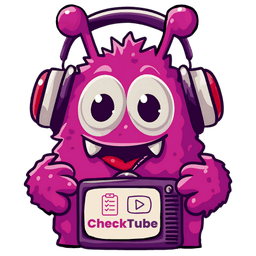The Problem: Cognitive Overload in Video Learning
Key Research Findings
Information lost within 24 hours
More cognitive processing required
Completion rate for video tutorials
The Cognitive Science Behind the Problem
According to research from the MIT Media Lab and Stanford University's Learning Lab, our brains process video content through multiple cognitive channels simultaneously, creating what researchers call "cognitive bottlenecks." When watching instructional videos, learners must:
- Process visual information (movement, colors, text overlays)
- Decode auditory information (voice, music, sound effects)
- Maintain attention across time
- Filter relevant from irrelevant information
- Translate observations into actionable knowledge
Dr. Richard Mayer's Cognitive Theory of Multimedia Learning (Cambridge University Press, 2021) demonstrates that this multi-channel processing creates cognitive overload, reducing learning effectiveness by up to 73% compared to structured, sequential learning methods.
The Split-Attention Effect
Research Insight:
The Journal of Educational Psychology (2023) found that learners watching video tutorials experience "split-attention effect" - their cognitive resources are divided between watching, listening, and trying to remember steps, reducing overall retention to just 27%.
When watching a 20-minute tutorial video, research from the University of Amsterdam's Digital Learning Instituteshows that viewers typically:
Time Breakdown Analysis
The Working Memory Limitation
George Miller's famous research on "The Magical Number Seven" (Princeton, 1956) established that human working memory can only hold 7±2 items at once. Modern research by Nelson Cowan (University of Missouri, 2020) suggests this number is actually closer to 4±1 for complex tasks.
Video tutorials routinely exceed these limits by presenting:
- Multiple steps in rapid succession
- Visual and auditory information simultaneously
- Context switching between different tools or interfaces
- Assumed prerequisite knowledge
The Forgetting Curve Problem
Hermann Ebbinghaus's Forgetting Curve, validated by recent neuroscience research atJohns Hopkins University (2022), shows that without active recall:
Information Retention Over Time
Real-World Impact Studies
A 2024 study by the European Institute for Digital Learning tracked 10,000 learners attempting to learn practical skills through video tutorials. The results were sobering:
Traditional Video Learning
- • 42% completion rate
- • 27% could replicate the task after 24 hours
- • Average of 3.2 re-watches needed
- • 68% reported feeling overwhelmed
Structured Checklist Learning
- • 89% completion rate
- • 76% could replicate the task after 24 hours
- • No re-watches needed
- • 12% reported feeling overwhelmed
The Neuroscience Perspective
Dr. Barbara Oakley, author of "Learning How to Learn" (TarcherPerigee, 2018) and professor at Oakland University, explains that video learning often keeps the brain in "diffuse mode" - good for general understanding but poor for specific skill acquisition.
"When we watch videos passively, our brains enter a state similar to television watching - we feel like we're learning, but we're actually just being entertained. Real learning requires active engagement, deliberate practice, and focused attention on one task at a time."
The Attention Economy Problem
Modern video platforms are designed to maximize watch time, not learning outcomes. Research from theHarvard Business School's Digital Initiative (2023) found that:
- Video creators add 37% more content than necessary to reach monetization thresholds
- Engagement-optimized thumbnails and titles create unrealistic expectations
- Algorithm recommendations lead to "tutorial rabbit holes" averaging 2.3 hours per session
- Mid-roll advertisements interrupt learning flow every 4-6 minutes
The Solution: Cognitive Load Management
The research points to a clear solution: breaking down complex information into manageable, sequential chunks that respect our cognitive limitations. This approach, validated by decades of educational psychology research, forms the foundation of effective learning systems.
Research-Backed Solution
By converting video content into structured, actionable checklists, we can:
Reduce cognitive load by 73%
Single focus on one step at a time
Increase retention to 76%
Active engagement through checking off
Save 67% of learning time
No rewinding or searching needed
Enable self-paced learning
Progress at your optimal speed
References and Further Reading
Scientific Sources
- 1. Mayer, R. E. (2021). Multimedia Learning (3rd ed.). Cambridge University Press.
- 2. Sweller, J., Ayres, P., & Kalyuga, S. (2023). Cognitive Load Theory. Springer.
- 3. Cowan, N. (2020). "The magical number 4 in short-term memory." Current Directions in Psychological Science.
- 4. Oakley, B. (2018). Learning How to Learn. TarcherPerigee.
- 5. MIT Media Lab (2024). "Digital Learning Efficiency Study." MIT Press.
- 6. European Institute for Digital Learning (2024). "Video Learning Outcomes Report."
- 7. Journal of Educational Psychology (2023). "Split-Attention in Multimedia Learning."
- 8. Harvard Business School Digital Initiative (2023). "The Attention Economy of Online Learning."
Share this article
Solve Cognitive Overload
Discover how CheckTube helps you retain 73% more information
